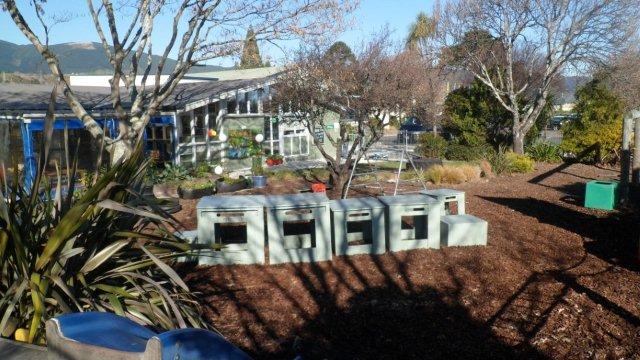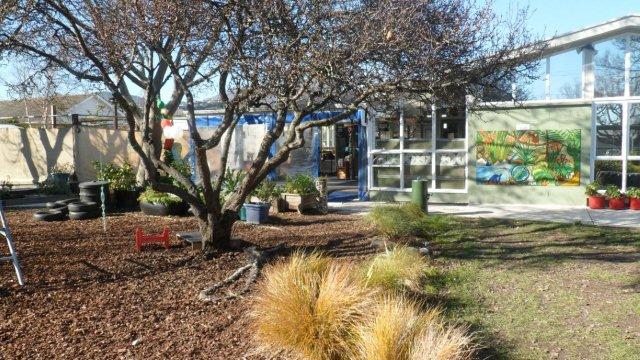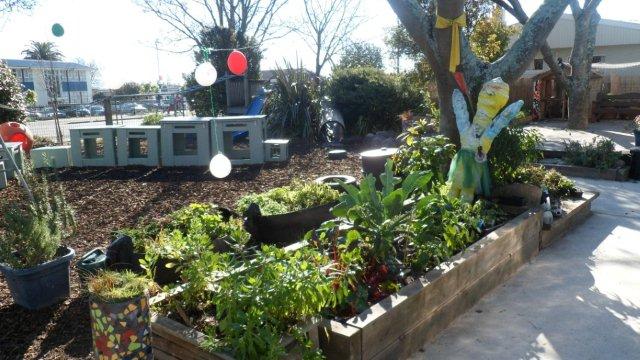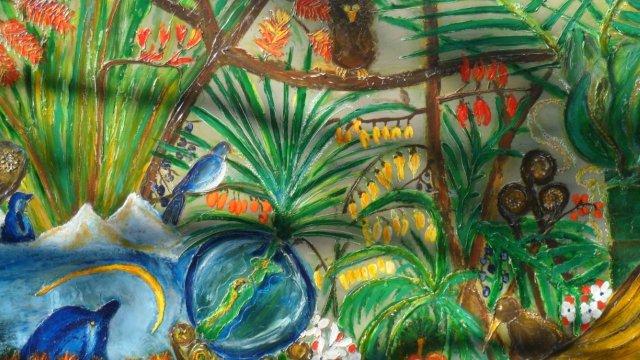Nayland Kindergarten
In September 1962, a meeting was held to consider the formation of a committee for the proposed Nayland Kindergarten.
In September 1962, a meeting was held to consider the formation of a committee for the proposed Nayland Kindergarten. In those days, in order to have a new kindergarten, the committee was required to be made up of men as well as women and to have £2000 in hand so that it could pay its share of the cost of the building. The formal motion that a committee be formed for the proposed Nayland Kindergarten was carried unanimously and, in 1967, the kindergarten opened.
The advantages of children attending kindergarten as stated by the Free Kindergarten Association in 1962 are still relevant today. ‘They learn to play with other children of their own age, to appreciate other people's rights, the importance of belonging to a group and to share.'
Nayland, as with all kindergartens, bases its programme of learning on the New Zealand Early Childhood Education Curriculum, Te Whāriki, which contains four principles: Empowerment (Whakamana), Holistic Development (Kotahitanga), Family and Community (Whanau Tangata) and Relationships (Ngā Hononga).
The Kindergarten's environment has certainly changed over the years. Originally the entrance to the building had a path that led directly through the grassed area, onto the footpath at Nayland Road. The fences were shorter, something that would not comply with regulations today. The slide mound was built in 1986, followed by the part-removal of the wooden playground in 1989. This was replaced with a large sandpit which is still there. A redesign of the playground was carried out in 2003, moving the grassed area and the swings. The popular water-play deck was built in 2005.
The building has had its fair share of remodelling too. The kitchen was rearranged by repositioning the sink and the oven and installing a pantry. In 2005, the office, storeroom, locker room and toilets were altered giving the teachers some much needed extra office space. Fresh paint, along with new carpet and wall coverings, gave the kindergarten a new and very appealing look and feel. A beautiful, handcrafted mural on the exterior of the building completed the look that is uniquely Nayland Kindergarten.
Although there have been changes to the Kindergarten's physical appearance, its philosophy of allowing children to learn through play has not. In 1967, children were encouraged to play, under supervision, with mud, water and equipment not available to them at home. Any parent who has had a child at Nayland Kindergarten will know that mud and water are still a much loved part of play today.
In fact, it was interesting to note just how many activities available today have been on-going events at Nayland for a number of years. How different the bikes are at the wheelathon today compared to those of the 1981 trikeathon, where yes, everyone rode trikes. It was good to see the Dads cooking the sausages back then too. In 1981, children were visiting Nayland College, having birthday celebrations and sliding down tarpaulin waterslides without a stitch of clothing on - these days clothes are a definite requirement.
1986 was a busy year with airport, fire station and farm visits, although these days the children would not be allowed to help the fireman put out a real demonstration fire. Bike rides on the reserve were happening in 1988 and are just as popular today, as are the visits from the police. I think the children would agree that the police cars of today are a lot cooler than the cars of 1988. It's good to see that so many activities have turned into Nayland Kindergarten traditions.
Today, children at kindergarten have so many opportunities to interact with the community and experience new activities. Lee Corlett has been a regular visitor to Nayland Kindergarten over the years with his physical activity programme which the children (and adults) thoroughly enjoy and Matua Madsen builds on the learning of Māori culture that occurs at kindergarten with his songs. These are just two examples of the many visitors that enrich the learning programme at Nayland.
One of the major changes between the kindergartens of the 1960's compared to today, has been the implementation of ICT as another valuable tool for learning, an area in which Nayland was a forerunner. Under supervision, children are able to access equipment such as Ipads and computers, which they may not be able to do at home. They learn to become comfortable with new technology, an important factor in today's technology driven world, and to share and respect the equipment.
Each morning and afternoon session has 40 children attending with a ratio of one teacher to ten children. There are five fully qualified teachers (two job share) and one administrator who work at Nayland. Families are encouraged to be part of Nayland Kindergarten and regular family events promote the feeling of community and belonging. This community feeling is carried over to school. Nayland has established good relationships with local schools, particularly Nayland Primary. Regular visits to the school library and the new entrant class along with reciprocating visits to the Kindergarten by primary classes, ease the transition to school.
Nayland Kindergarten is heading towards its 50th anniversary. There have been a lot of changes to both the Kindergarten itself and the teaching programme, but one thing has not changed at all since 1962, and that is its sense of community!
This article was submitted as part of a Nelson Marlborough Institute of Technology Creative Writing assignment, 2013. Edited May 2020
Story by: Nat Haslam
Further Sources
Books
- May, H. (2001) Politics in the playground : the world of early childhood in postwar New Zealand Wellington, N.Z. : Bridget Williams Books with the New Zealand Council for Educational Research.
http://www.worldcat.org/oclc/316515577
Newspapers
- 100 years ago : kindergarten schools (2012) Education today.3. p.8-9
- Collett, G, (1988, May 13) Barriers overcome by first male teacher. Nelson Mail, p3
-
Wells, Clare (2012) Kindergarten : our story. Education today. 3. pp.2-7
Websites
- Nayland Kindergarten. Retrieved 20 June 2013:
http://naylandkindy.blogspot.co.nz/ - Nelson Tasman Kindergartens. Retrieved 20 June 2013:
https://www.nelsontasmankindergartens.com/ - Te Whāriki. On Early Learning Education/ Ministry of Education.Retrieved May 2020:
http://www.education.govt.nz/early-childhood/teaching-and-learning/te-whariki/



